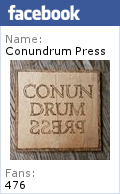How is it that a traumatic event can carry more emotional truth when it is retold through fiction and myth, rather than through facts only?
When confronting the unique horrors of the Holocaust, several writers have found that the only way to truthfully convey the experience is via fiction and myth. The facts of the story simply aren’t enough to portray the whole, horrific picture.
In his novel Everything is Illuminated, Jonathan Safran Foer weaves two strands of narratorial voices—one a realistic travelogue, one a mythical retelling of the history of Trachimbrod—in order to “illuminate readers by transforming them into witnesses of a real tragedy that appears to have mythical dimensions” (Francisco Collado-Rodriquez).
Spanish writer Jorge Semprun details his personal history and fills in his faulty memories with fictions in order to truthfully portray his experience in his quasi-memoir Literature of Life. In his 2007 Paris Review interview, Semprun says, “Horror is so repetitive…and without literary elaboration, one simply cannot be heard or understood…The only way to make horror palable is to construct a fictional body of work.”
These two writers prove that fiction can lend truth and meaning to our personal traumas and, through the exploratory process, healing. How can we weave fictions into our own traumas to better understand them? How can we better understand truth?
Tags: fiction, holocaust, jonathan safran foer, jorge semprun, myth, truth






